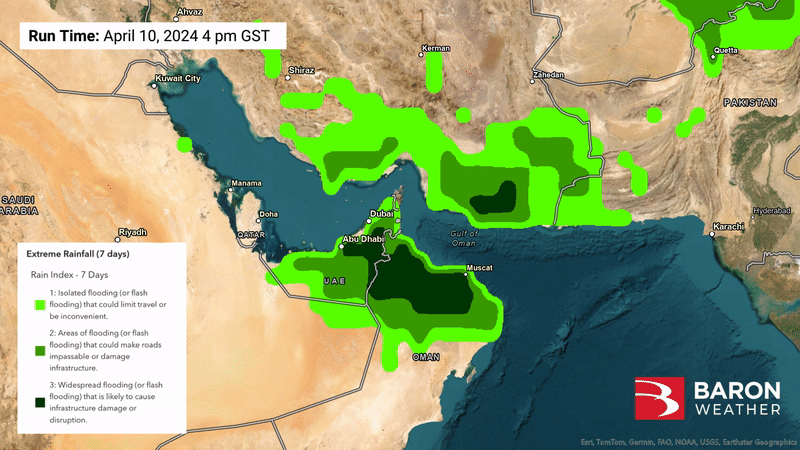Widespread flooding in Dubai last week has people wondering if cloud seeding is to blame for the disaster. The short answer is no, but here, I explain why that is the case.
In order to understand cloud seeding, one must understand how rain develops.
In order to make it rain, you need moisture, a lifting mechanism in the atmosphere, and something for the moisture to condense on to.
That last part is what cloud seeding focuses on.
Condensation nuclei is the term for tiny particles in the air in which water vapor can condense on to, which in turn creates a rain drop.
There are plenty of naturally occurring condensation nuclei in the atmosphere.
Some example are dust, smoke, pollen, sea salt, and other naturally occurring particles.
Humans have artificially added some of these particles to the air in an effort to enhance rainfall. This is known as cloud seeding.
Silver iodide is the particular agent of choice for cloud seeding.
In order for cloud seeding to be successful, it must be done in an existing storm.
As stated earlier, without moisture and atmospheric lift, condensation nuclei are useless.
In the case of cloud seeding, humans are attempting to make more raindrops in a given cloud.
Artificially adding condensation nuclei to the air in an existing storm can increase rainfall by up to 20%, but this is under ideal conditions.
So in the case of the Dubai flood, cloud seeding likely had little impact on its outcome.
Even if rainfall amounts were 10 to 20 percent less, similar flooding would have still occurred.
In any case, it’s hard to quantify how much, if any, of this rain was enhanced by cloud seeding. It likely was much less than 20 percent.
Weather models, including the one below, were predicting widespread flooding in the Dubai area days ahead of the event.
These models do not include the effects cloud seeding in their algorithms.
The city of Al Ain recorded 10 inches of rain from the storm, with around 6 inches at the Dubai airport. This is twice the city’s annual average.
Our team of meteorologists dives deep into the science of weather and breaks down timely weather data and information. To view more weather and climate stories, check out our weather blogs section.

